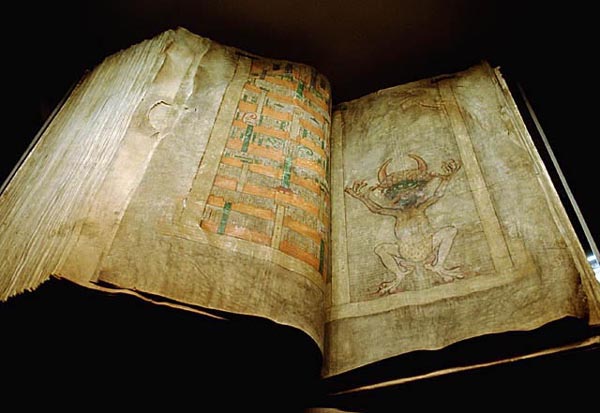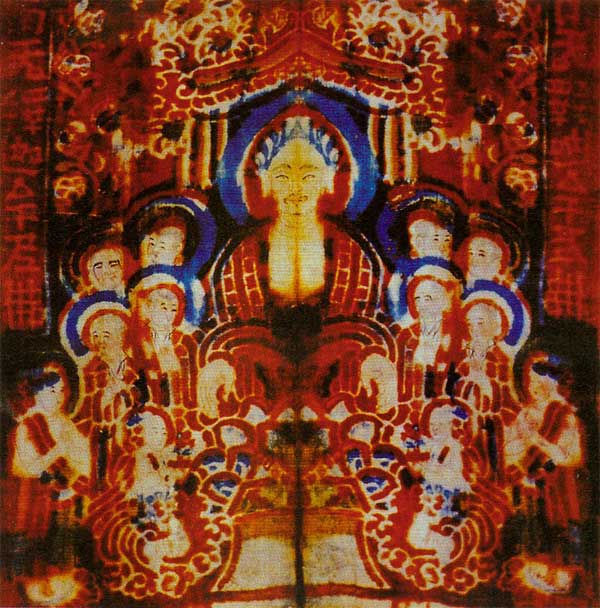|
Recto
''Recto'' is the "right" or "front" side and ''verso'' is the "left" or "back" side when text is written or printed on a leaf of paper () in a bound item such as a codex, book, broadsheet, or pamphlet. In double-sided printing, each leaf has two pages – front and back. In modern books, the physical sheets of paper are stacked and folded in half, producing two leaves and four pages for each sheet. For example, the outer sheet in a 16-page book will have one leaf with pages 1 (recto) and 2 (verso), and another leaf with pages 15 (recto) and 16 (verso). Pages 1 and 16, for example, are printed on the same side of the physical sheet of paper, combining recto and verso sides of different leaves. The number of pages in a book using this binding technique must thus be a multiple of four, and the number of leaves must be a multiple of two, but unused pages are typically left unnumbered and uncounted. A sheet folded in this manner is known as a folio, a word also used for a book ... [...More Info...] [...Related Items...] OR: [Wikipedia] [Google] [Baidu] |
Folio
The term "folio" () has three interconnected but distinct meanings in the world of books and printing: first, it is a term for a common method of arranging Paper size, sheets of paper into book form, folding the sheet only once, and a term for a book made in this way; second, it is a general term for a sheet, leaf or page in (especially) manuscripts and old books; and third, it is an approximate term for the Book size, size of a book, and for a book of this size. First, a folio (abbreviated fo or 2o) is a book or pamphlet made up of one or more full sheets of paper, on each of which four pages of text are printed, two on each side; each sheet is then folded once to produce two leaf (books), leaves. Each leaf of a folio book thus is one half the size of the original sheet. Ordinarily, additional printed folio sheets would be inserted inside one another to form a group or "gathering" of leaves prior to binding the book. Second, folio is used in terms of page numbering for some bo ... [...More Info...] [...Related Items...] OR: [Wikipedia] [Google] [Baidu] |
Book
A book is a structured presentation of recorded information, primarily verbal and graphical, through a medium. Originally physical, electronic books and audiobooks are now existent. Physical books are objects that contain printed material, mostly of writing and images. Modern books are typically composed of many pages bound together and protected by a cover, what is known as the '' codex'' format; older formats include the scroll and the tablet. As a conceptual object, a ''book'' often refers to a written work of substantial length by one or more authors, which may also be distributed digitally as an electronic book ( ebook). These kinds of works can be broadly classified into fiction (containing invented content, often narratives) and non-fiction (containing content intended as factual truth). But a physical book may not contain a written work: for example, it may contain ''only'' drawings, engravings, photographs, sheet music, puzzles, or removable content like ... [...More Info...] [...Related Items...] OR: [Wikipedia] [Google] [Baidu] |
Page (paper)
A page is one side of a Recto and verso, leaf (a sheet or half-sheet) of paper, parchment or other material (or electronic media) in a book, magazine, newspaper, or other collection of sheets, on which text or illustrations can be printed, written or drawn, to create documents. It can be used as a measure of communicating general quantity of information ("That topic covers twelve pages") or more specific quantity ("there are 535 words in a standard page in twelve point font type"). Etymology The word "page" comes from the Latin term , which means, "a written page, leaf, sheet", which in turn comes from an earlier meaning "to create a row of vines that form a rectangle".Emmanuel Souchier, "Histoires de pages et pages d'histoire", dans iarchive:laventuredesecri0000expo, L'Aventure des écritures, Paris, Bibliothèque nationale de France, 1999. . The Latin word derives from the verb , which means to stake out boundaries when planting vineyards. The page in English lexicon Compou ... [...More Info...] [...Related Items...] OR: [Wikipedia] [Google] [Baidu] |
Codex
The codex (: codices ) was the historical ancestor format of the modern book. Technically, the vast majority of modern books use the codex format of a stack of pages bound at one edge, along the side of the text. But the term ''codex'' is now reserved for older manuscript books, which mostly used sheets of vellum, parchment, or papyrus, rather than paper. By convention, the term is also used for any Aztec codex (although the earlier examples do not actually use the codex format), Maya codices and other pre-Columbian manuscripts. Library practices have led to many European manuscripts having "codex" as part of their usual name, as with the Codex Gigas, while most do not. Modern books are divided into paperback (or softback) and those bound with stiff boards, called hardbacks. Elaborate historical bindings are called treasure bindings. At least in the Western world, the main alternative to the paged codex format for a long document was the continuous scroll, which was the ... [...More Info...] [...Related Items...] OR: [Wikipedia] [Google] [Baidu] |
Sketchbook
A sketchbook is a book or pad with blank pages for sketching and is frequently used by artists for drawing or painting as a part of their creative process. Some also use sketchbooks as a sort of blueprint for future art pieces. The exhibition of sketchbooks at the Fogg Art Museum at Harvard University in 2006 suggested that there were two broad categories for classifying sketches: *Observation: this focuses on the documentation of the external world and includes many such travel and nature studies and sketches recording an artist's travels. *Invention: this follows the artists' digressions and internal journeys as they develop compositional ideas. Types of sketchbooks Sketchbooks come in a wide variety of shapes and sizes, with varied covers, and differing numbers of pages. Sketchbooks began as a way to provide a readily available supply of drawing paper in the convenient form of a book. The finish of work found in the sketchbook varies widely depending on the artist and th ... [...More Info...] [...Related Items...] OR: [Wikipedia] [Google] [Baidu] |
Drawing
Drawing is a Visual arts, visual art that uses an instrument to mark paper or another two-dimensional surface, or a digital representation of such. Traditionally, the instruments used to make a drawing include pencils, crayons, and ink pens, sometimes in combination. More modern tools include Stylus (computing), computer styluses with graphics tablets and gamepads in Virtual reality, VR drawing software. A drawing instrument releases a small amount of material onto a surface, leaving a visible mark. The most common support for drawing is paper, although other materials, such as Paperboard, cardboard, vellum, wood, plastic, leather, canvas, and Lumber, board, have been used. Temporary drawings may be made on a blackboard or whiteboard. Drawing has been a popular and fundamental means of public expression throughout human history. It is one of the simplest and most efficient means of communicating ideas. The wide availability of drawing instruments makes drawing one of the most comm ... [...More Info...] [...Related Items...] OR: [Wikipedia] [Google] [Baidu] |
Bilingual Edition
Multilingualism is the use of more than one language, either by an individual speaker or by a group of speakers. When the languages are just two, it is usually called bilingualism. It is believed that multilingual speakers outnumber monolingual speakers in the world's population. More than half of all Europeans claim to speak at least one language other than their mother tongue; but many read and write in one language. Being multilingual is advantageous for people wanting to participate in trade, globalization and cultural openness. Owing to the ease of access to information facilitated by the Internet, individuals' exposure to multiple languages has become increasingly possible. People who speak several languages are also called ''polyglots''. Multilingual speakers have acquired and maintained at least one language during childhood, the so-called first language (L1). The first language (sometimes also referred to as the mother tongue) is usually acquired without formal edu ... [...More Info...] [...Related Items...] OR: [Wikipedia] [Google] [Baidu] |
Annotation
An annotation is extra information associated with a particular point in a document or other piece of information. It can be a note that includes a comment or explanation. Annotations are sometimes presented Marginalia, in the margin of book pages. For annotations of different digital media, see web annotation and text annotation. Literature, grammar and educational purposes Practising visually Annotation Practices are highlighting a phrase or sentence and including a comment, circling a word that needs defining, posing a question when something is not fully understood and writing a short summary of a key section. It also invites students to "(re)construct a history through material engagement and exciting DIY (Do-It-Yourself) annotation practices." Annotation practices that are available today offer a remarkable set of tools for students to begin to work, and in a more collaborative, connected way than has been previously possible. Text and film annotation Text and Film A ... [...More Info...] [...Related Items...] OR: [Wikipedia] [Google] [Baidu] |
Arabic Alphabet
The Arabic alphabet, or the Arabic abjad, is the Arabic script as specifically codified for writing the Arabic language. It is a unicase, unicameral script written from right-to-left in a cursive style, and includes 28 letters, of which most have contextual letterforms. Unlike the modern Latin alphabet, the script has no concept of letter case. The Arabic alphabet is an abjad, with only consonants required to be written (though the long vowels – ''ā ī ū'' – are also written, with letters used for consonants); due to its optional use of diacritics to notate vowels, it is considered an impure abjad. Letters The basic Arabic alphabet contains 28 letter (alphabet), letters. Forms using the Arabic script to write other languages added and removed letters: for example ⟨پ⟩ is often used to represent in adaptations of the Arabic script. Unlike Archaic Greek alphabets, Greek-derived alphabets, Arabic has no distinct letter case, upper and lower case letterforms. Many le ... [...More Info...] [...Related Items...] OR: [Wikipedia] [Google] [Baidu] |
Woodblock Printing
Woodblock printing or block printing is a technique for printing text, images or patterns used widely throughout East Asia and originating in China in antiquity as a method of textile printing, printing on textiles and later on paper. Each page or image is created by carving a wooden block to leave only some areas and lines at the original level; it is these that are inked and show in the print, in a relief printing process. Carving the blocks is skilled and laborious work, but a large number of impressions can then be printed. As a Woodblock printing on textiles, method of printing on cloth, the earliest surviving examples from China date to before 220 AD. Woodblock printing existed in Tang China by the 7th century AD and remained the most common East Asian method of printing books and other texts, as well as images, until the 19th century. ''Ukiyo-e'' is the best-known type of moku hanga, Japanese woodblock art print. Most European uses of the technique for printing images on ... [...More Info...] [...Related Items...] OR: [Wikipedia] [Google] [Baidu] |







